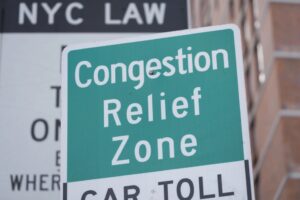GRAIN VALLEY, Mo. — Noting that the primary mission of the Federal Motor Carrier Safety Administration is to reduce crashes, injuries and fatalities involving large trucks and business, the president of the Owner-Operator Independent Drivers Association said Monday that allowing CDL holders under the age of 21 to drive interstate commerce isn’t the way to go.
“When it comes to highway safety, the data is clear – younger drivers and inexperienced drivers crash more,” said OOIDA President and CEO Todd Spencer. “This is why OOIDA strongly opposes a pilot program that would allow drivers under the age of 21 to operate in interstate commerce.”
Spencer was responding to a request by the FMCSA for comments regarding a second pilot program for under-21 drivers. A previous pilot program involving 18- to 20-year-old military veterans and reservists is in the process of being undertaken by the agency.
The pilot program on which Spencer was commenting is for non-military drivers.
“Motor vehicle crashes are a leading cause of death for 15-20-year-olds, according to the National Center for Health Statistics,” Spencer wrote, adding that a 2017 National Highway Traffic Safety Administration analysis on younger drivers found that 8.3% of all drivers involved in fatal crashes were young drivers. However, young drivers were only 5.4% of all licensed drivers in 2017.
“CMV drivers under the age of 19 are four times more likely to be involved in fatal crashes than all truck drivers and CMV drivers between the ages of 19-20 are six times more likely to be involved in fatal crashes compared to all truck drivers,” Spencer wrote. “Additional research has shown that most drivers under the age of 21 ‘…lack the general maturity, skill and judgment that is necessary in handling commercial motor vehicles,’ while other studies have shown that the prefrontal cortex, which is the portion of the brain responsible for complex cognitive behavior and decision making, does not fully develop until the mid-20s5 and that adults are better equipped to recognize errors in decision making. Given this existing data, we firmly believe that licensing under-21 drivers for interstate commerce will result in more crashes, injuries, and fatalities involving large trucks.”
Spencer said the pilot program was at least partially fueled by claims by the largest motor carriers, and the trade associations that represent them, that there is a driver shortage, which OOIDA has long-labeled a “myth.”
Spencer said OOIDA is concerned that the FMCSA is indicating its acceptance “of this notion by moving forward with this unsafe proposal and providing credence to dangerous legislation such as the DRIVE-Safe Act. Experience tells us many of the entities pushing for the change in the current age requirement would simply use it to take advantage of a new pool of drivers – teenagers, who would be subjected to poor working conditions, predatory lease-to-own schemes, and woefully inadequate compensation.”
Spencer offered an option to the pilot program.
“Rather than developing programs to allow more teenagers behind the wheel of 80,000-pound trucks, the federal government, in collaboration with industry stakeholders, should be taking steps to reverse the incessantly high driver turnover rate, which has varied between 71 and 102% among large truckload carriers over the last several years,” Spencer said. “This constant driver churn decreases highway safety as those who leave the workforce are immediately replaced with less experienced individuals in an effort to keep labor costs as low as possible and avoid improving difficult working conditions. Without addressing the underlying circumstances that have led to excessive churn, we anticipate turnover rates will remain precariously high or even increase – no matter the age of the driver.”
Lyndon Finney’s publishing career spans over 55 years beginning with a reporter position with the Southwest Times Record in Fort Smith, Arkansas, in 1965. Since then he’s been a newspaper editor at the Southwest Times Record, served five years as assistant managing editor of the Arkansas Democrat-Gazette in Little Rock and from November 2004 through December 2019 served as editor of The Trucker. Between newspaper jobs he spent 14 years as director of communications at Baptist Health, Arkansas’ largest healthcare system. In addition to his publishing career he served for 46 years as organist at Little Rock’s largest Baptist church.









I understand the points illustrated in the article. However, what also needs to be addressed are the statistics regarding CDL drivers in age group above what is discussed here. Since the rollout of the Clearinghouse I have read over 157,000 CDL drivers tested positive for drugs. 50% attributed to THC. That leaves 50% to harder drugs like cocaine, meth, opioids and heroin. 33% of construction zone fatalities are attributed to CDL drivers which made up 5% of the traffic. Following to deaths by trucks is up. Distracted CDL drivers is too common. Before we criticize what we assume let’s concentrate of what we know.
Granted FMCSA has dropped the ball on this. Soft numbers driven compliance reviews is not addressing the inadequate management oversight issues either.